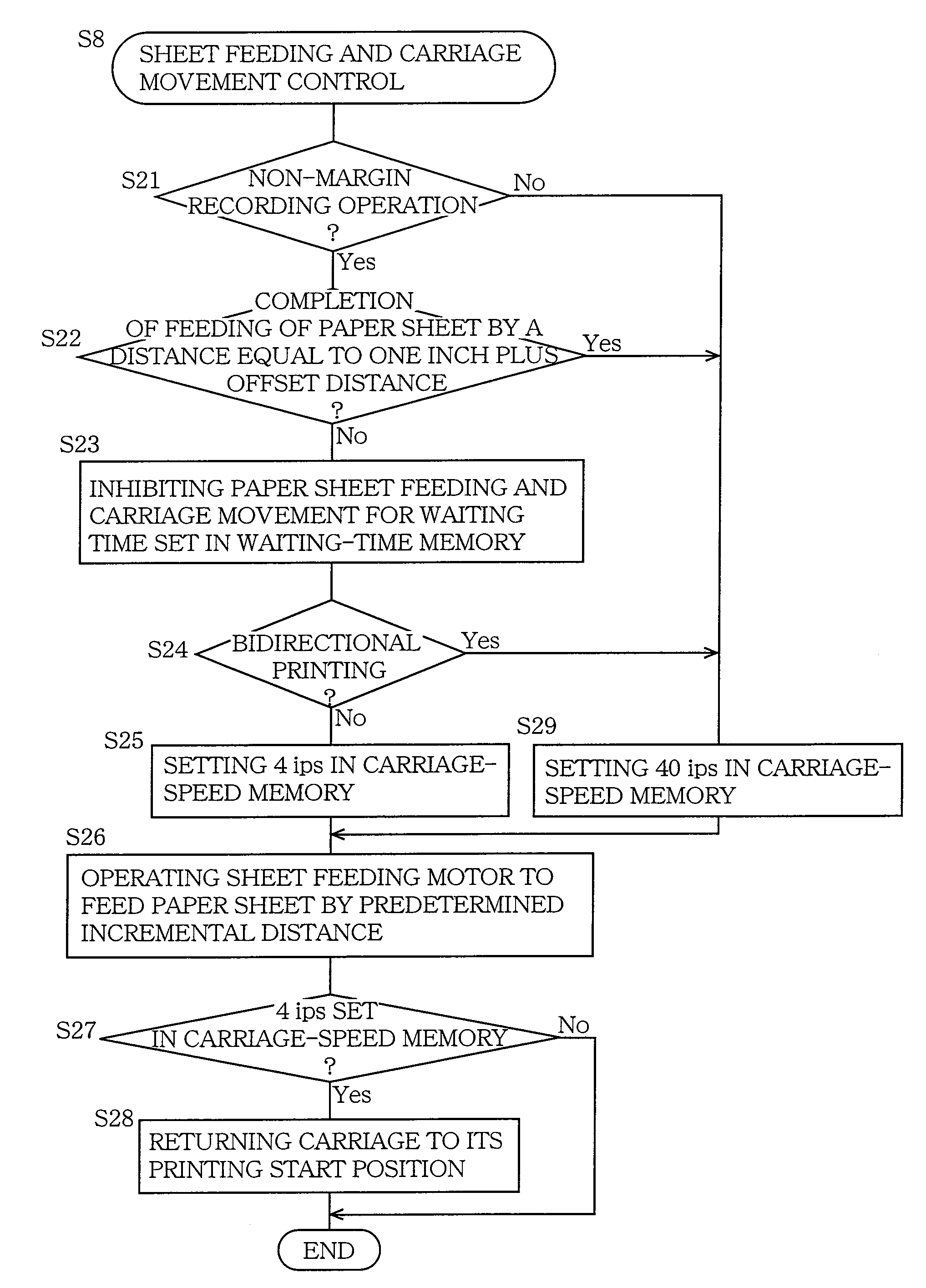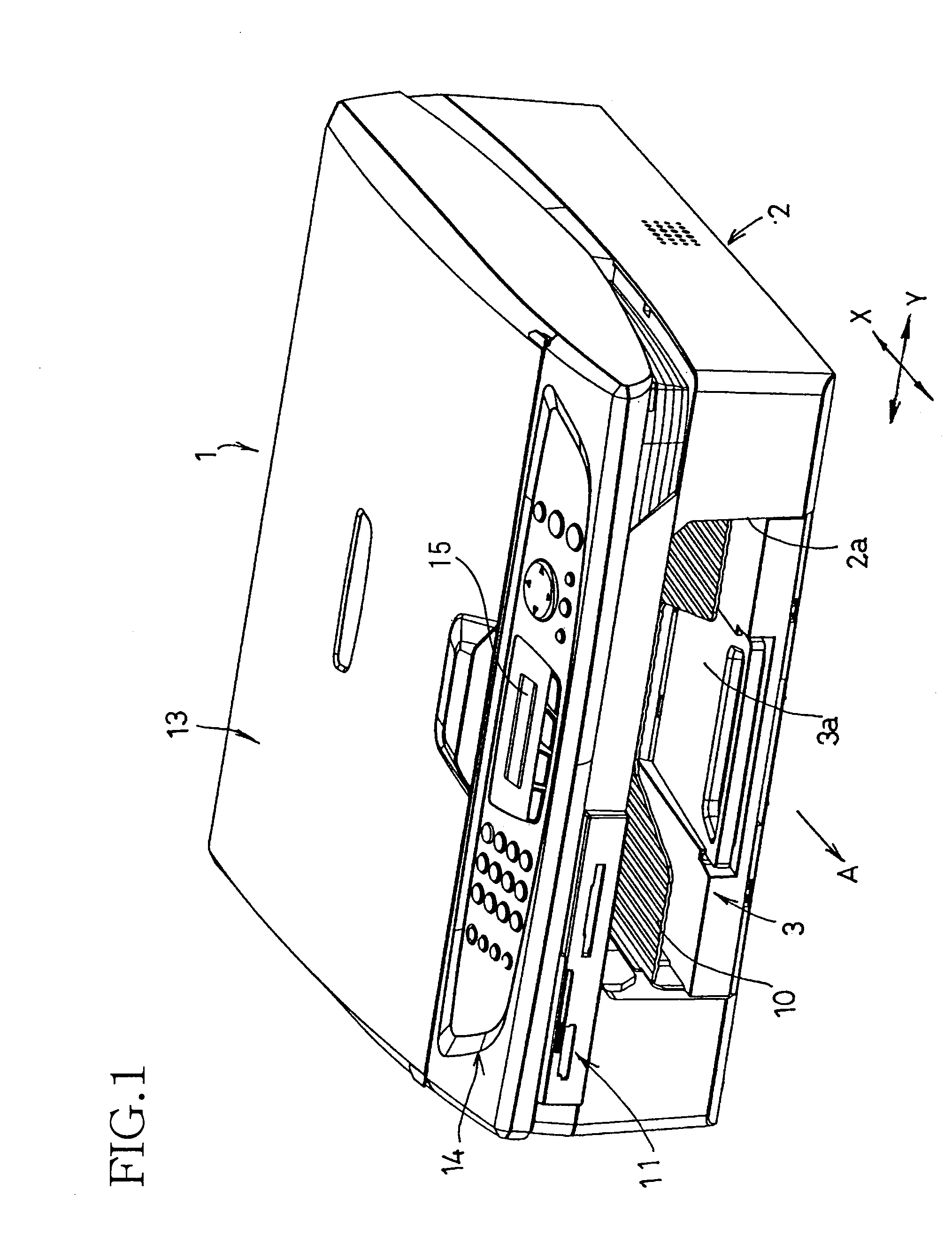Image-forming apparatus
a technology of image-forming apparatus and forming container, which is applied in the direction of power drive mechanism, printing, spacing mechanism, etc., can solve the problems of large spacing distance between the upstream and downstream walls in the feeding direction of recording medium, undetectable high cost of manufacture of ink absorber and time-consuming installation of ink absorber in the container, and the back or lower surface contamination problem, etc., to achieve the effect of reducing the risk of ink mist contamination of recording medium, high resolution
- Summary
- Abstract
- Description
- Claims
- Application Information
AI Technical Summary
Benefits of technology
Problems solved by technology
Method used
Image
Examples
Embodiment Construction
[0029]Referring to FIGS. 1-3, there is shown an image-forming apparatus 1 in the form of a multi-function device (MFD) constructed according to one embodiment of the present invention, which has a printing function, a copying function, a scanning function and a facsimile (telecopier) function. However, the Image-forming apparatus 1 may be an ink-jet printer having only the printing function. Although a recording medium on which an image is recorded by the image-forming apparatus 1 is a sheet of paper P in the present embodiment, the recording medium may be any other kinds of sheets such as a plastic film.
[0030]The image-forming apparatus 1 is capable of performing not only a normal printing (recording) operation with top, bottom and side margins, but also a non-margin printing (recording) operation without the top and bottom margins being left along the leading and trailing edges of the paper sheet P (but with the right and left margins being left along the right and left edges of t...
PUM
 Login to View More
Login to View More Abstract
Description
Claims
Application Information
 Login to View More
Login to View More - R&D
- Intellectual Property
- Life Sciences
- Materials
- Tech Scout
- Unparalleled Data Quality
- Higher Quality Content
- 60% Fewer Hallucinations
Browse by: Latest US Patents, China's latest patents, Technical Efficacy Thesaurus, Application Domain, Technology Topic, Popular Technical Reports.
© 2025 PatSnap. All rights reserved.Legal|Privacy policy|Modern Slavery Act Transparency Statement|Sitemap|About US| Contact US: help@patsnap.com



